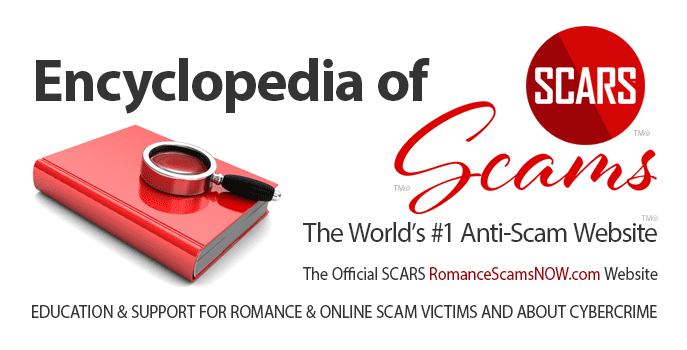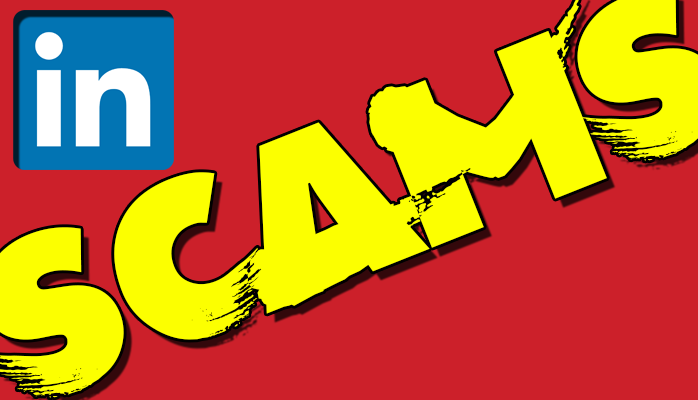Online scams are Nothing New!
We have been dealing with scammers since the Nigerian discovered email!
Reprinted from LinkedIn
However, the scammer community, particularly that of Western Africa has discovered LinkedIn in a big way.
A little background first.
As the creator of what may have been the first dating site back in ’95, I have watched that world with interest for 20 years, and see how overwhelmed online dating is with fake profiles and rampant scams. Some estimate that as much as US$800,000,000.00 per year flows into the Nigerian economy from scamming alone. There may be another $500,000.000.00 into the rest of Western Africa. I am also the publisher of one of the top-three Anti-Scammer websites (RomanceScamsNow.com), which I began some years ago after a close friend lost over $20,000.00 to a Ghanaian scammer. I, and my staff have been watching this problem for many years evolve and explode.
In a recent survey conducted by our site of 30,000 of our site visitors, the overwhelming attitude is that online dating is flooded with scammers and no longer works. A message that has been born out in the most recent lawsuit against a principal online dating site, accused of allowing scamming to proliferate, since their business model is based on being able to justify fees based upon the total number of active profiles. This is the common model throughout the online dating business. Unfortunately, it appears that in that world self-policing has failed to both protect the businesses and their customers.
Scamming Moves To Social Media
It should come as no surprise that as the scammers grew more sophisticated that they moved into Facebook and Google+ in a big way. Some claim that as many as 20% of Facebook accounts are fake. While I think that number is lower, I agree that almost every Facebook user has encountered a scammer or fraudster, and usually on a regular basis.
In the case of both Facebook and Google+ the modus operandi is is for the scammer to create a profile, populate it with a couple of photos (single digit number to be sure), and start harvesting victims by friending or following people with large contacts. This is not only a method for trolling for victims, but it is also a means for them to impersonate one or more of those victims, since the scammer needs “identities” to operate. This is why it is so critical to have your privacy settings to lock down you details and especially your photos – scammer burn through a HUGE number of photos – an average scammer scam use over 1,000 impersonations in just 6 months. In the meantime, the victims face is identified as a “Scammer” across the world. In women, it is mostly Adult Stars and Models who’s photos are stolen, and in men the current trend is US & European Military stolen from social media.
Now We Come to LinkedIn
Over the past two years, the scammers have been testing the waters here in LinkedIn, with the result that they are making an aggressive push forward.
Currently, scammers on LinkedIn run the gamut, from traditional Nigerians, Ghanaians, and other West Africans, to Asians and Russians. Each type has their particular business model, and each has their conversion percentages. However, in almost all cases the fake profiles share similarities that you should be on guard for. Remember, they may not be after you, but they are definitely after your contact list!
Scammers on Linked exhibit similar characteristics to those on other social media sites:
- Recent profile creation
- Few contacts initially
- Little, and inconsistent history
- No recommendations
- Little or no participation in groups
- Odd language use (for the place the person comes from)
- Web links that are broken or see out of place
- Gmail or Yahoo email addresses (assuming you can see them)
- Scammers on LinkedIn take full advantage of the messaging system, unlike other forms where they try to get you off of the source site and onto gmail or yahoo mail.
In a recent case, I received an Inmail from a Dubai venture capitalist, asking if I was looking for seed money. He has a profile that looked “odd” in that this was a person in his 60’s yet only had 10 years of work experience in his profile. He also had inconsistent education history.
After doing a Google image search and using TinEye.com (the two most powerful ways to verify a scam is to use their photos against them, that and their emails); I discovered the photo was of a UAE Defence Minister. I contacted the US Embassy for the country the scammer said he was based in, and confirmed that is was a real business, but that the profile name had no relationship with it. The profile was reported to LinkedIn, and to their credit they removed it. They story had a happy ending, in that the UAE did track down this scammer, and now awaits trial for impersonating a minister of their country. However, this is a rare event.
In that case, the scammer was on a phishing expedition to obtain business financial information that could be used for creating credit accounts and other purposes, including personal identity theft. Just think about the information in your profile, and how that might be used to impersonate your identity.
LinkedIn, like Facebook, does have protections of a sort. Your greatest protection is to not “play the game” the scammer wants you to.
The following things are safeguards you should be using now!
- Keep your contacts private
- Keep critical details out of your profile if you can
- Never blindly accept connection requests – make sure you know the person, or their context, and confirm it with a message before accepting them – besides it is polite to say hi before connecting!
- Look at a person’s profile for clues about their real identity
- Never give endorsements to people you don’t actually know – this is how scammers build their profiles
- If you send a message, look carefully at the reply – did they respond to what you send originally – in other words answer your questions, or just send a generic reply
The common types of LinkedIn Scams running are:
- Personal information phishing scams
they way your personal information so someone can steal your identity - Business information phishing scams
they want your business information so they can buy products or services in your business name - Catfishing scams
they want to develop a personal relationship which will let them ask for money – a helping hand - Blackmail Scams
engage you in any discussion and harvest information that can be embarrassing to you – personally or professionally - 419 Advance Fee Frauds
usual they have A MILLION DOLLARS and they need you to pay a small fee to have it sent to you – the new variation on this is application fees for business loan - Fake Check Scams
they want to buy something from you and send you a check (fake of course), but by the time you discover it, they have your products
Scammers are clever but also dumb. They are smart and adapt, so always be on your guard. However, they are running a large scale business – a game of numbers – and do not have time for all the details usually, meaning they make mistakes – watch for those!
The best advice I can give you, having been on LinkedIn now almost 15 years, is clean out your contacts from time to time. If you don’t know them, or at least the company or profession, get rid of them. This is not a game where the biggest list wins! It is the quality of your list that matters in my humble opinion.
If you find a scammer, please drop me a message. It is up to each of us to make sure the bad guys don’t win wherever they are! If you have been a victim, I might be able to help.
Kudos to LinkedIn for being the most responsive social media on this topic!!!
Cheers,
Dr. Tim
Web Publisher, Content Guru
& Big-Game Scammer Hunter




Michael A. Becker on linked in, his photo actually belongs to Dr. Ivan Young. This is a Nigerian scam artist.
Antonio Manetti – atmanetti@gmail.com is a scammer in Linkedin, makes ladies fall in love with him then asks them to send him money for his business. He is supposdly an engineer from Italy but has gotten contracts worth millions of dollars to work in Dubai UAE so he says he doesnt have enough money to cover expenses and thats when he asks the women who he has seduced to help him raise money and send it to him and promises to pay them back and to marry them.